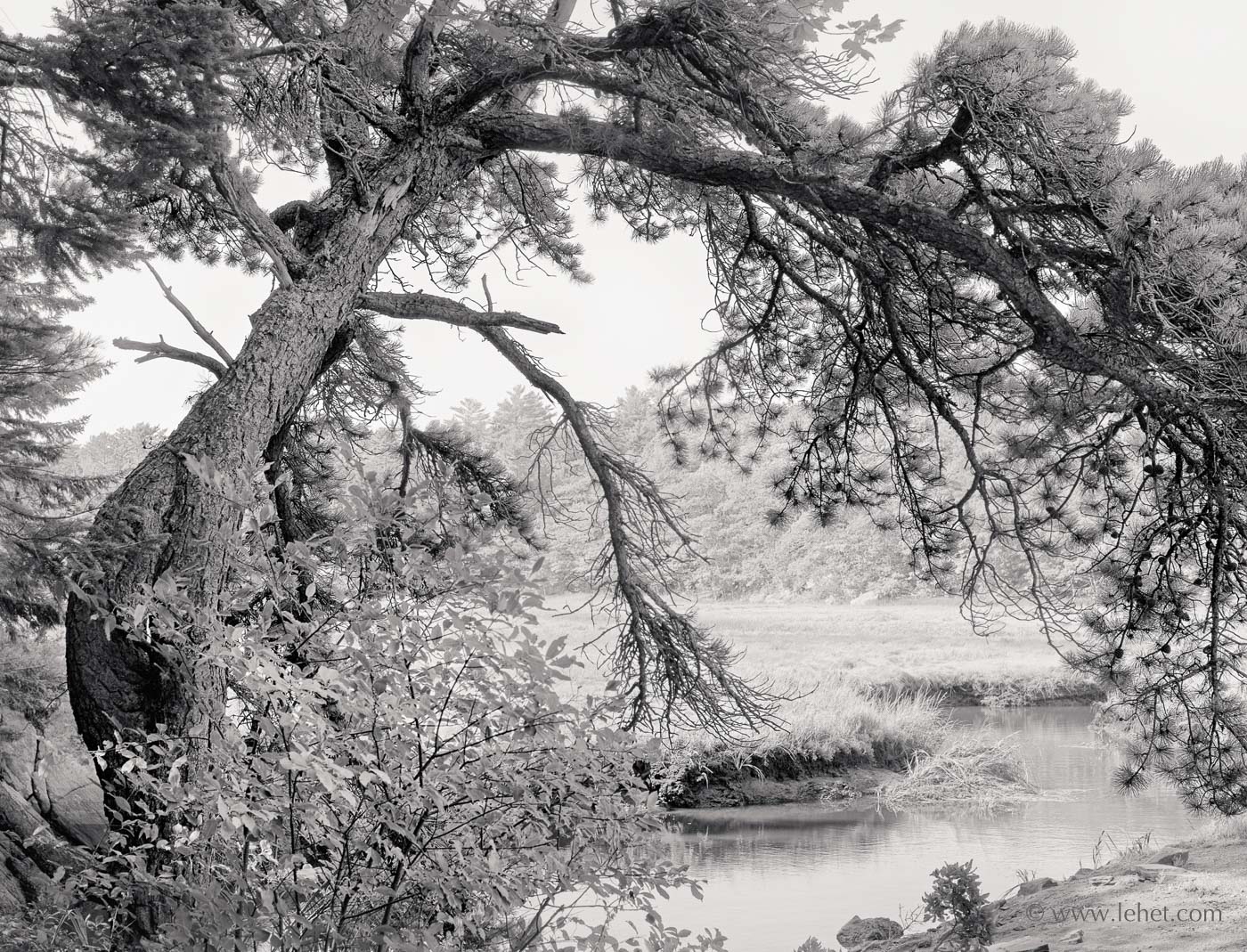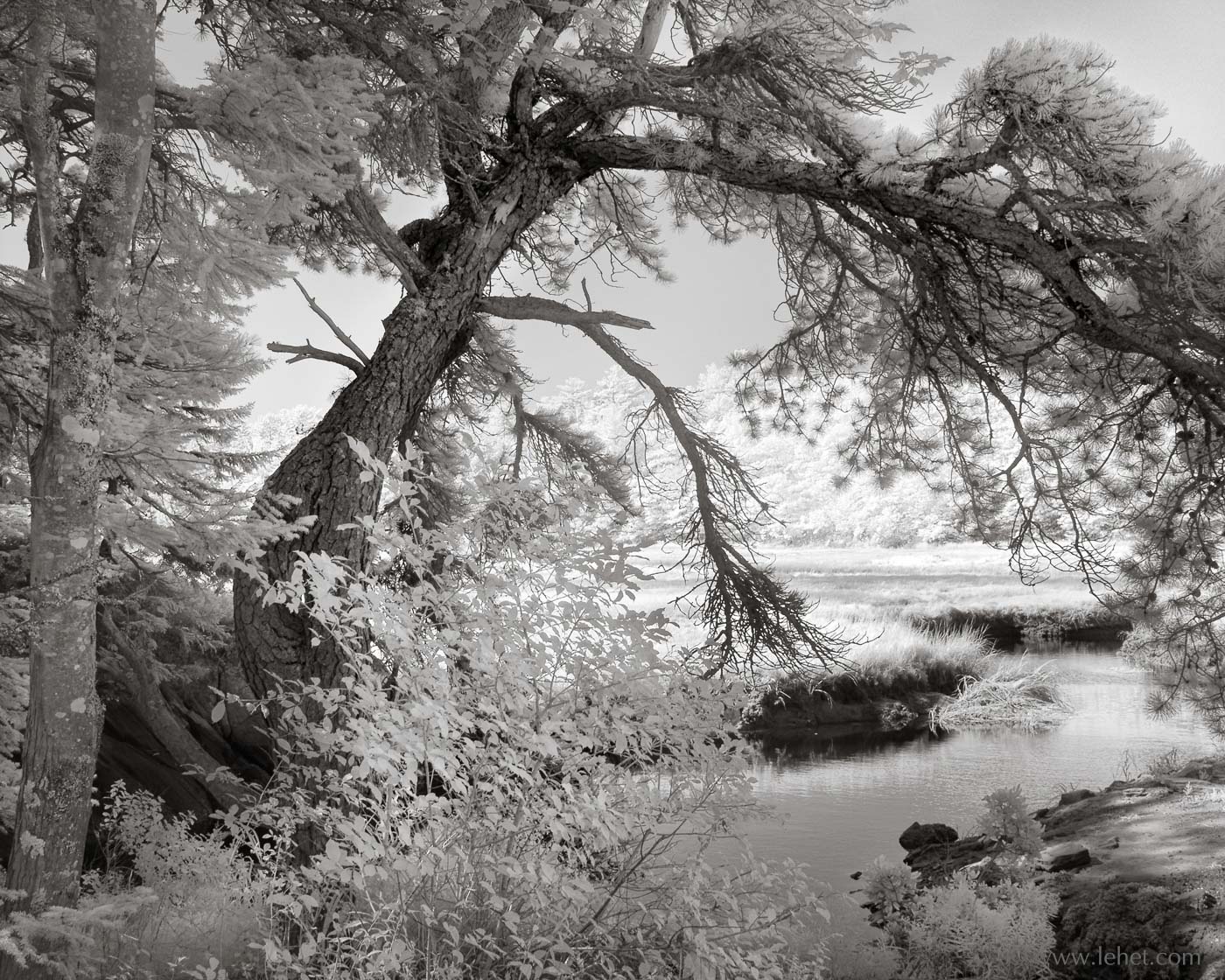
not-infrared, from D800e full frame

exposed with infrared-only camera
A few weeks ago I had a chance to make a collection of small matted/bagged prints for a flip-through bin at Frog Hollow in Burlington. They only wanted infrared prints. That’s a little bit of a funny restriction for me, because I usually consider the infrared to be more like an extension of my palette rather than a separate realm. Anyway, I was very glad to have the chance to do it, and I treated it as a little show. Usually in a show I’ll work from a range of prints that I know work, to something very fresh, new to me. I take it as a chance to stretch out and push myself, which is funny, because I can do that any time. For this show, this image was one of the new ones, and I was very happy to see it come out of the printer. I printed it on Canson Rag Photographique, a slightly textured matte paper, just a little smoother than etching paper, but still with a very nice tooth.
After that I was printing some things with a different ink set in the printer, for “luster” paper rather than matte. Then when I had to switch inks again (a process that is a little expensive) for a print sale last week, I decided to print that infrared print bigger on the different luster paper (Canson Baryta Photographique) to see if it would have different qualities. Yes, a very nice print indeed.
In the old days, when I carried around a view camera with a bellows, dark cloth, and boxes of film-holders, I used to also expose infrared film. It was a tricky and squirrely business back then, often failing. So even if I “saw” the image as infrared, I would also expose some regular sheet film as well, just so that I might get something, or in case it worked better on black and white tri-ex or plus-x or T-max or whatever. That’s a habit I carried forward, but the difference now is that the infrared isn’t always the hardest to manifest. At least last year the most difficult camera I used was the Nikon D800e full frame, trickier to get a good image than with the good reliable Olympus or even the infrared. Often on a given subject I might work with three cameras.
I looked through my catalog to see if I had made the exposure with the full frame rig, and I had. And I got a good one! With the infrared reading informing my vision, I rendered this as black and white. It’s very hard to decide which of these I like better. I think for a small image, the infrared might have it, but the full frame version has much more detail, and it will make a much better large print.
In a previous blog post I wrote a bit about how I am letting go of my notion that each situation or scene can only have one definitive print. More and more I’m opening up to letting it be OK to let any particular vision expand a bit into its various facets.
The black and white non-infrared version is no longer on the site, but let me know if you’d like a print.
